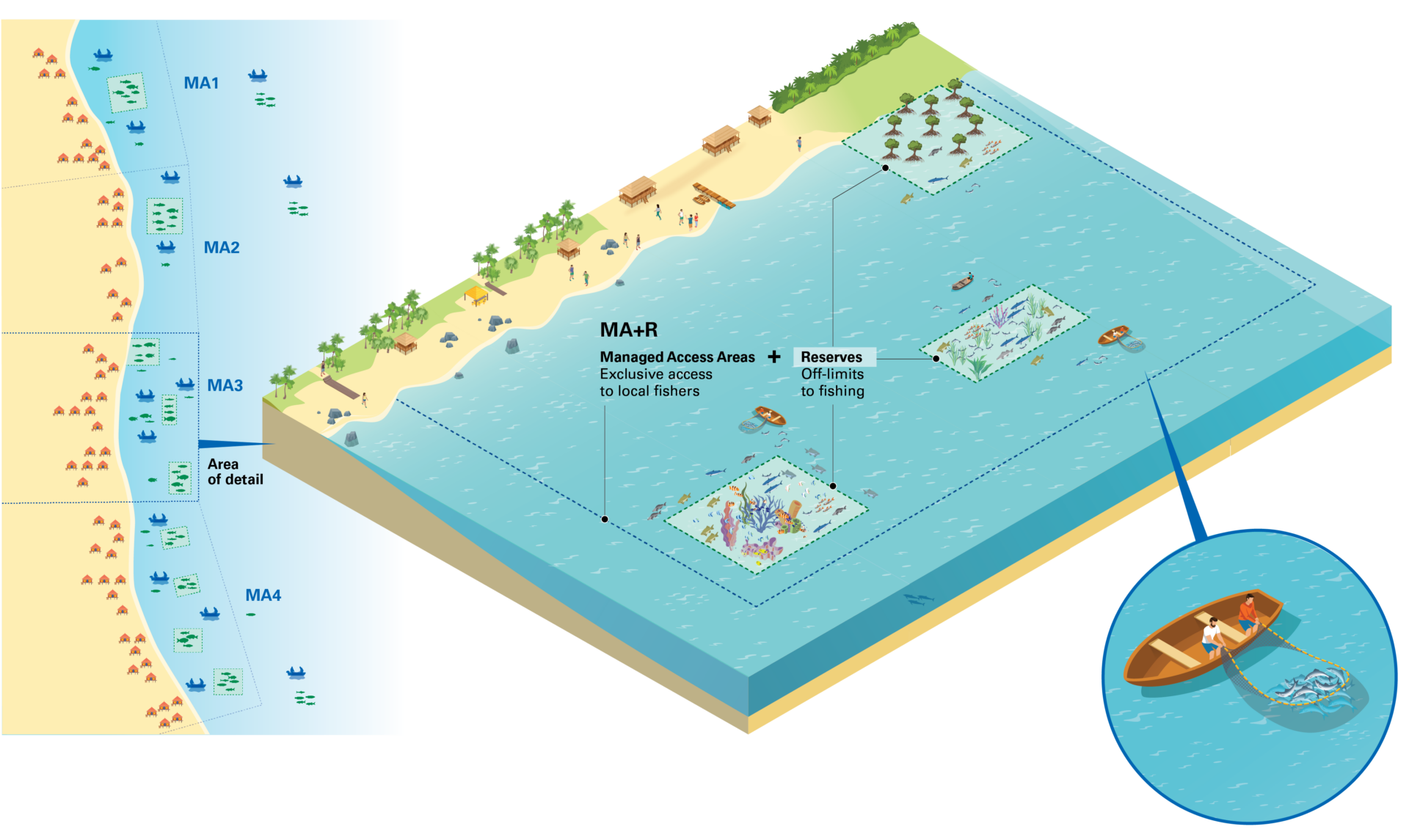OECMs: Pairing ocean protection & sustainable use
Other Effective area-based Conservation Measures (OECMs) are a conservation tool deployed by governments to protect ecosystems, while allowing for their sustainable use by Indigenous Peoples and Local Communities. Rare works with coastal communities to establish and sustainably manage OECMs in the thin band of ocean extending 12 nautical miles from shore—an area we call the Community Seas.
OECMs and 30×30
In 2022, nearly 200 nations agreed to the Global Biodiversity Framework, which included the 30×30 target of protecting 30% of the planet’s land and water by 2030. To protect 30% of the ocean, many countries use traditional Marine Protected Areas (MPAs), which limit or prohibit human activity including fishing. But with hundreds of millions of people depending on coastal waters for food and livelihoods, MPAs are not always practical.
OECMs are a tool that pair effective protection with sustainable use. OECMs were formally recognized by the Convention on Biological Diversity in 2018 and were included as part of 30×30 of the Global Biodiversity Framework in 2022. Now, countries are developing 30×30 strategies that use both MPAs and OECMs to protect their ocean resources.
OECMs offer a pathway to achieving 30×30 in a way that reflects the perspectives, priorities, and participation of local leaders and communities, whose food security, livelihoods, and ability to adapt to climate change depend on productive and resilient natural resources.
Managed Access with Reserves: A type of OECM
Rare works with local communities and governments to establish and manage a type of OECM called Managed Access with Reserves (MA+R), a fisheries management system pairing sustainable use and protection of coastal waters to yield positive outcomes for people and nature. The system consists of two parts:
- Managed Access. Areas of water mapped, legally established, and managed cooperatively between local government and local fishers, who enjoy preferential rights to fish in the area.
- Reserves. Areas within or adjacent to the Managed Access area where fishing is off limits so that habitats and fish populations can regenerate.

Watch this video explaining Managed Access with Reserves, and how it helps people and nature.
Watch this video explaining how we network marine reserves together to maximize their impact.
Rare’s Work on OECMs
Impact Numbers
Total square kilometers of managed access areas
Total hectarage of reserve areas
Focus Areas
Helping communities effectively and equitably co-manage their fisheries
Rare works with communities and local governments to design and implement OECMs that grant local fishers preferential access rights to local waters, while establishing no-take marine reserves within or adjacent to the fishing areas to revitalize fisheries. Members of the community participate in co-management of the fisheries, which both empowers local people and ensures rules set by the community are followed.
Elevating communities in countries’ 30×30 strategies
Rare works with national governments and local partners to create 30×30 stategies and targets that support the rights & empowerment of local communities, including by recognizing & prioritizing OECMs.
Advocating for OECMs on the global stage
Rare works with partners to promote OECMs as a critical tool for ensuring positive outcomes for biodiversity and people. Our teams produce scientific and practical implementation guidance informed by our case studies around the world, and work to advance OECM recognition and prioritization for biodiversity, climate & community outcomes.
Channeling capital toward development and implementation of OECMs
Rare works to orient public, private and philanthropic capital towards the development and implementation of OECMs. Rare’s new Small–Scale Fisheries Impact Bond is channeling $6 million of initial investment to establish three new OECMs in Southeast Sulawesi, Indonesia.